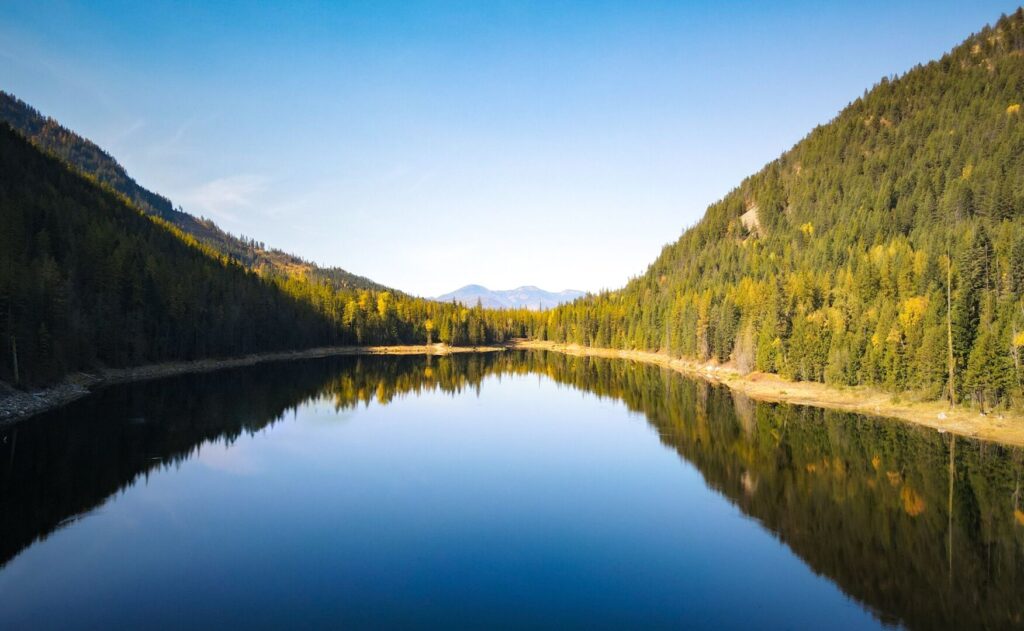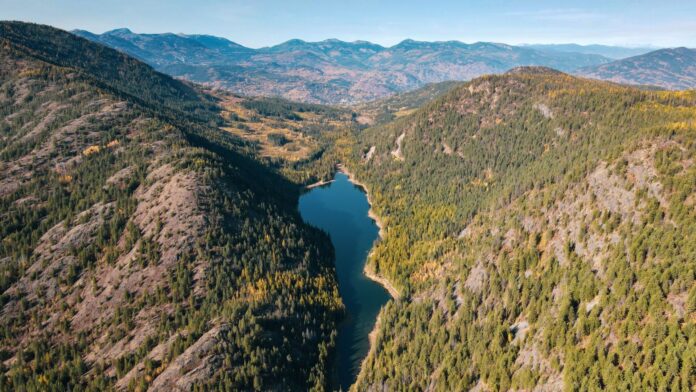The City of Trail has transformed the historic Violin Lake watershed into a new ecological asset, focusing on local wildlife preservation and creating future opportunities for the community.
The nearly completed $2.14-million Violin Lake and Cambridge Dam Ecosystem and Flood Mitigation Project involved the decommissioning of the Cambridge Creek Reservoir and Violin Lake dams.
“The project was put forth based on some requirements the BC dam authority had put forward and ultimately the City looked at it as an opportunity to enhance an area and remove the liability decreasing costs in coming years.” said Ben Gresley-Jones, City of Trail’s Manager of Engineering and Projects.
“Our goal of this project was to decommission or remove the dam and put the area back to its natural state.”

The decommissioning project was crucial, not just because of the aging infrastructure, but also due to the costs associated with maintaining and monitoring the dams says the City of Trail’s Senior Engineering Technician John Howes, citing a projected $1 million to simply maintain the obsolete dams over a decade.
Located just south of the City of Trail, the Cambridge Reservoir and Violin Lake dam system, built in 1918, served as a critical water source until 1994, when the City transitioned to the Columbia River as a long-term solution. Although the dams were no longer in use, the City was still required to monitor and manage them. In December 2019, however, the British Columbia Dam Safety Officer ordered the City to either upgrade the Cambridge Creek Reservoir Dam’s spillway or pursue decommissioning. Removing the dam system was deemed the feasible option, according to Howes.
“With new dam safety regulations in place, the financial burden became unsustainable,” he adds. “Removing the dams allowed us to increase public safety and alleviate liability, redirect resources to more pressing infrastructure needs, and focus on protecting a beloved natural area that requires little if any maintenance.”
The City of Trail worked in partnership with the British Columbia Wildlife Federation (BCWF) to prepare a Final Design Report for removal of the dams. In 2021, the decommissioning was further incentivized by a $561,000 Healthy Watersheds Initiative Grant from the Real Estate Foundation of British Columbia and was also approved for up to $1.84 million in funding from Infrastructure Canada under the Adaptation, Resilience & Disaster Mitigation Program.
While Violin Lake has historically been a popular spot for locals, it’s currently closed to the public for recreational use, as access requires crossing private property. During project planning, the City still preserved the majority of the existing trails and roads when redesigning the area’s ecosystem.
“We worked closely with biologists and project managers to ensure the restoration was as gentle as possible on the environment,” Howes says. “Our goal was to create a natural, functional ecosystem benefiting both wildlife and the community.”
Gradual water drainage allowed for a controlled transformation, and field technicians employed low-impact techniques like ‘rough and loosen’ to naturally shape new shorelines and manage water flow, promoting long-term ecological sustainability.
Given the complexity of the job, the City brought in experts Robin Annschild of Rewilding Water & Earth and the BCWF’s Thomas R. Biebighauser for project design, management and construction oversight. Engineering reviews, site and field assessments and inspections further highlighted the potential environmental and social benefits of restoring the wetlands, such as improving habitat for wildlife and fish.
While the majority of the primary decommissioning phase was complete by fall 2021, ongoing efforts focus on the natural habitat restoration of nearly 20 hectares of wetlands and 3 kilometres of streams.
“Wildlife monitoring in 2022 confirms the wetland restoration in the Cambridge Basin and at Violin Lake was successful in maintaining or increasing breeding habitat for amphibians and provides improved habitat for the many other wildlife species documented on the site,” a wildlife monitoring report notes.
Initiated in 2021 alongside the decommissioning of the dams and reviewed at one-, two-, and five-year intervals, the wildlife monitoring program assesses the recovery of wildlife, including amphibians like the at-risk western toad, and evaluates the overall ecological impact of the restoration efforts.
While the area looks different than it once did, Howes says the project is a success and life has begun to thrive in the enhanced habitat.
“In the newly created wetland basin, you’ll see new trees starting to grow along with remnants of the old growth forest,” he adds. “The new catchment areas, whether they are made of rock, wood, or organic material, serve as perching points for wildlife. This evolving habitat now features a mix of marshland, directed stream areas, and small ponds, which support various forms of wildlife, including larger animals like deer and bears.”
Be the first to know! Don’t miss out on breaking news and daily updates in your area. Sign up to MyKootenayNow News Alerts.




